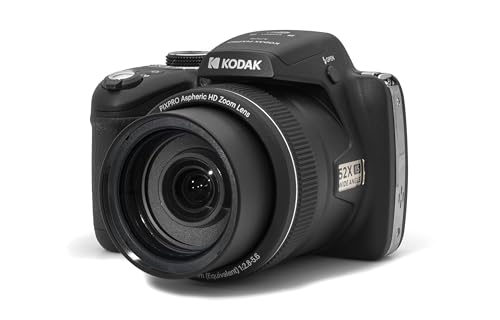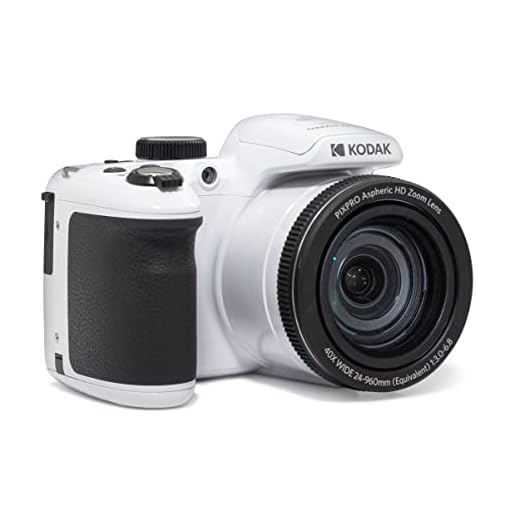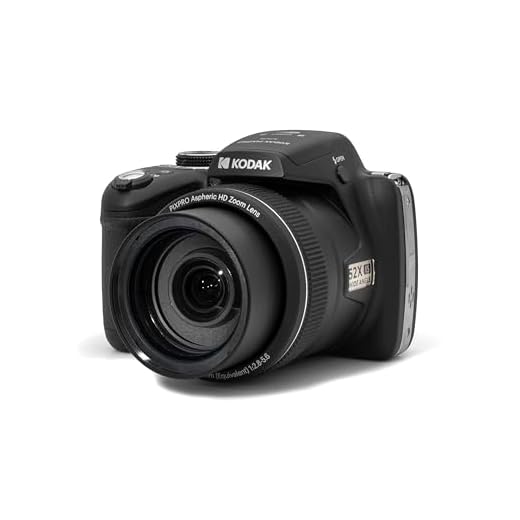




Optical zoom is an essential feature in digital cameras that allows you to magnify the image without sacrificing quality. It is a key factor to consider when choosing a camera, as it determines how close you can get to the subject without physically moving. But how much optical zoom is good for a digital camera?
The ideal optical zoom range depends on your photography needs and preferences. A higher optical zoom range, such as 10x or more, is beneficial for capturing distant subjects with clarity and detail. On the other hand, cameras with lower optical zoom, around 3x to 5x, are more compact and suitable for everyday use.
When deciding on the optical zoom range for your digital camera, consider the types of photos you plan to take and the level of flexibility you desire. Ultimately, the best optical zoom is one that meets your specific requirements and enhances your photography experience.
How Optical Zoom Impacts Image Quality
When it comes to digital cameras, optical zoom plays a crucial role in determining the image quality of your photos. Unlike digital zoom, which simply enlarges the pixels in an image, optical zoom uses the camera’s lens to physically zoom in on the subject. This results in sharper, more detailed images with better clarity and resolution.
Enhanced Detail and Clarity
One of the key advantages of optical zoom is its ability to capture fine details and textures in your photos. By physically magnifying the image, optical zoom allows you to zoom in on distant subjects without sacrificing image quality. This means you can capture sharp, clear images with rich detail, even when shooting from a distance.
Improved Resolution and Sharpness
Optical zoom also plays a crucial role in enhancing the resolution and sharpness of your photos. By using the camera’s lens to zoom in on the subject, optical zoom ensures that the image retains its clarity and sharpness, even when capturing distant subjects. This results in high-quality images with crisp details and vibrant colors, making your photos stand out from the crowd.
Understanding the Basics of Optical Zoom
Optical zoom is a key feature to consider when choosing a digital camera. It refers to the camera’s ability to magnify an image using the lens without sacrificing image quality. Unlike digital zoom, which simply enlarges the pixels in an image, optical zoom physically adjusts the lens to zoom in on the subject.
When shopping for a camera, look for the optical zoom ratio, which is usually expressed as a number followed by “x” (e.g., 3x, 5x, 10x). This number indicates how many times the lens can magnify the image compared to its original size. The higher the optical zoom ratio, the closer you can get to your subject without losing clarity.
Factors to Consider:
When determining how much optical zoom is good for you, consider your photography needs. If you often shoot distant subjects or wildlife, a higher optical zoom ratio may be beneficial. However, if you primarily take close-up shots or portraits, a lower zoom ratio may suffice.
Remember: More optical zoom isn’t always better. A high zoom ratio may result in a bulkier camera and higher cost. It’s essential to strike a balance between zoom capability, portability, and budget to find the right camera for your needs.
Choosing the Right Optical Zoom Range
When selecting a digital camera, one of the key features to consider is the optical zoom range. The optical zoom determines how close you can get to your subject without sacrificing image quality. Here are some factors to keep in mind when choosing the right optical zoom range:
1. Assess Your Photography Needs: Consider the type of photography you will be doing. If you plan to capture distant subjects like wildlife or sports events, a camera with a higher optical zoom range (around 10x or more) would be ideal. For everyday photography, a moderate optical zoom range (5x to 10x) should suffice.
2. Image Quality: Higher optical zoom ranges often result in better image quality compared to digital zoom. Optical zoom physically extends the lens to magnify the image, whereas digital zoom enlarges the existing image digitally, leading to a decrease in quality.
3. Portability: Cameras with higher optical zoom ranges tend to be bulkier and heavier. If portability is a concern, consider opting for a camera with a more compact size and a lower optical zoom range.
4. Budget: Cameras with longer optical zoom ranges typically come at a higher price point. Evaluate your budget and prioritize features that are essential to your photography needs.
By considering these factors and assessing your specific requirements, you can choose the right optical zoom range that will enhance your photography experience.
Factors to Consider When Selecting Optical Zoom
When choosing a digital camera, the optical zoom capability is an important factor to consider. Here are some key factors to keep in mind:
1. Optical Zoom Range
Consider the range of optical zoom offered by the camera. Higher optical zoom ranges allow you to capture distant subjects with more clarity and detail.
2. Image Quality
Optical zoom maintains image quality as it magnifies the image optically without losing detail. This is in contrast to digital zoom, which can degrade image quality as it simply enlarges the pixels.
- Check the resolution of the camera to ensure that the optical zoom produces sharp and clear images.
- Look for cameras with image stabilization features to minimize blur at higher zoom levels.
By considering these factors, you can select a digital camera with the right optical zoom capability to suit your photography needs.
Importance of Image Stabilization with Optical Zoom
Image stabilization is a crucial feature when it comes to using optical zoom on a digital camera. When you zoom in on a subject, even the slightest hand movement can result in blurry or distorted images. Image stabilization helps counteract this effect by minimizing the impact of shaky hands or movements, allowing you to capture sharp and clear photos even when using high levels of optical zoom.
Without image stabilization, the quality of your images may suffer, especially in low light conditions or when shooting moving subjects. The technology helps ensure that your photos remain crisp and detailed, enhancing the overall quality of your photography.
When considering a digital camera with optical zoom, it is important to prioritize models that offer effective image stabilization. This feature can make a significant difference in the outcome of your photos, allowing you to take full advantage of the camera’s zoom capabilities without compromising on image quality.
Optical Zoom vs. Digital Zoom: Pros and Cons
Optical Zoom:
Optical zoom is a feature that physically adjusts the camera’s lens to zoom in on a subject. This results in higher image quality and clarity compared to digital zoom. Optical zoom allows you to get closer to your subject without sacrificing image quality, making it ideal for capturing detailed shots of distant objects.
Pros:
- Higher image quality
- Clearer shots
- Ideal for detailed photography
Digital Zoom:
Digital zoom, on the other hand, is a software-based zoom that enlarges the pixels in the image, resulting in a loss of quality and clarity. While digital zoom can help you get closer to a subject, the trade-off is a decrease in image quality. It is best used when optical zoom is not available or when a subject is too far for optical zoom to reach.
Cons:
- Loss of image quality
- Reduced clarity
- Not ideal for detailed photography
Optical Zoom and Low-Light Performance
When considering the optical zoom of a digital camera, it’s important to also take into account its low-light performance. A higher optical zoom can be beneficial for capturing distant subjects, but it may also affect the camera’s ability to perform well in low-light conditions.
Cameras with larger optical zoom ranges often have smaller apertures, which can limit the amount of light that reaches the camera’s sensor. This can result in reduced image quality and increased noise in low-light situations.
On the other hand, cameras with lower optical zoom ranges may have larger apertures, allowing more light to reach the sensor and improving low-light performance. These cameras may produce clearer, less noisy images in challenging lighting conditions.
| Optical Zoom Range | Low-Light Performance |
|---|---|
| High (e.g., 20x or more) | May struggle in low-light conditions due to smaller apertures |
| Medium (e.g., 5x-10x) | Balanced performance in various lighting conditions |
| Low (e.g., 3x or less) | Better low-light performance with larger apertures |
Ultimately, the ideal optical zoom range for a digital camera depends on your specific photography needs and shooting conditions. Consider both the zoom capabilities and low-light performance to find a camera that suits your preferences.
Enhancing Photography Experience with Optical Zoom
Optical zoom plays a crucial role in enhancing your photography experience by allowing you to capture distant subjects with clarity and detail. When choosing a digital camera, the amount of optical zoom is an important factor to consider. A higher optical zoom range, such as 10x or 20x, enables you to zoom in on subjects without sacrificing image quality.
With a greater optical zoom, you can capture stunning landscapes, wildlife, and architectural details from a distance, bringing out the finer nuances of your subjects. This versatility allows you to experiment with different perspectives and compositions, expanding your creative possibilities.
Moreover, optical zoom maintains image quality by physically magnifying the subject, unlike digital zoom which simply crops and enlarges the image, resulting in pixelation and loss of detail. By utilizing optical zoom, you can achieve sharper, more detailed photographs that truly showcase your vision.
In conclusion, a digital camera with a substantial optical zoom range can elevate your photography to new heights, enabling you to capture breathtaking moments with precision and clarity. Whether you’re a novice or a seasoned photographer, optical zoom is a valuable tool for enhancing your photographic skills and creating stunning visual narratives.
Finding the Sweet Spot for Optical Zoom in Digital Cameras
When choosing a digital camera, one of the key features to consider is the optical zoom. Optical zoom allows you to magnify distant subjects without sacrificing image quality, unlike digital zoom which simply enlarges the image digitally. But how much optical zoom is ideal for your needs?
Factors to Consider:
There are several factors to consider when determining the right amount of optical zoom for your digital camera:
| Zoom Range | Consider the zoom range of the camera, such as 3x, 5x, or 10x. A higher zoom range allows you to capture distant subjects with more detail. |
|---|---|
| Usage | Think about how you plan to use the camera. If you frequently photograph distant subjects or wildlife, a higher optical zoom may be beneficial. |
| Image Quality | Remember that optical zoom maintains image quality, while digital zoom can result in pixelation. Choose a camera with a good balance of optical zoom for clear, sharp images. |
Ultimately, the sweet spot for optical zoom in digital cameras varies depending on your preferences and shooting style. Consider these factors to find the right balance between zoom capabilities and image quality for your photography needs.
FAQ
What is optical zoom in a digital camera?
Optical zoom in a digital camera refers to the actual physical lens moving closer to the subject to magnify the image. It provides a higher quality zoom compared to digital zoom, which simply enlarges the pixels in the image.
How much optical zoom is considered good for a digital camera?
The ideal amount of optical zoom depends on your photography needs. For general use, a camera with 3x to 5x optical zoom is usually sufficient. However, if you plan to capture distant subjects or wildlife, you may want a camera with 10x or more optical zoom for better clarity and detail.









